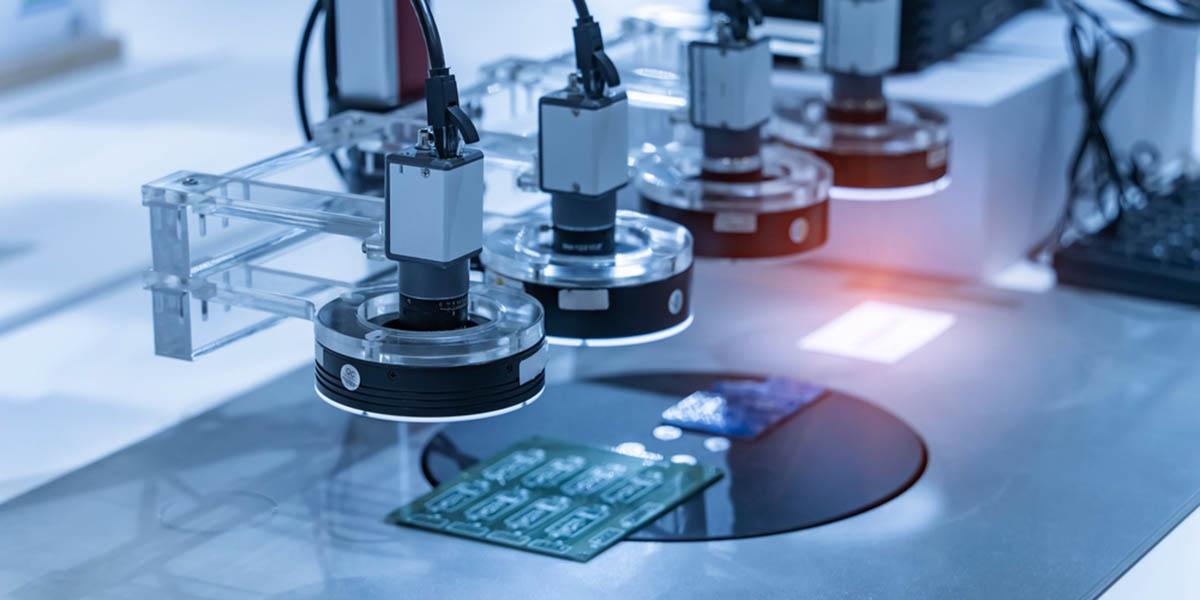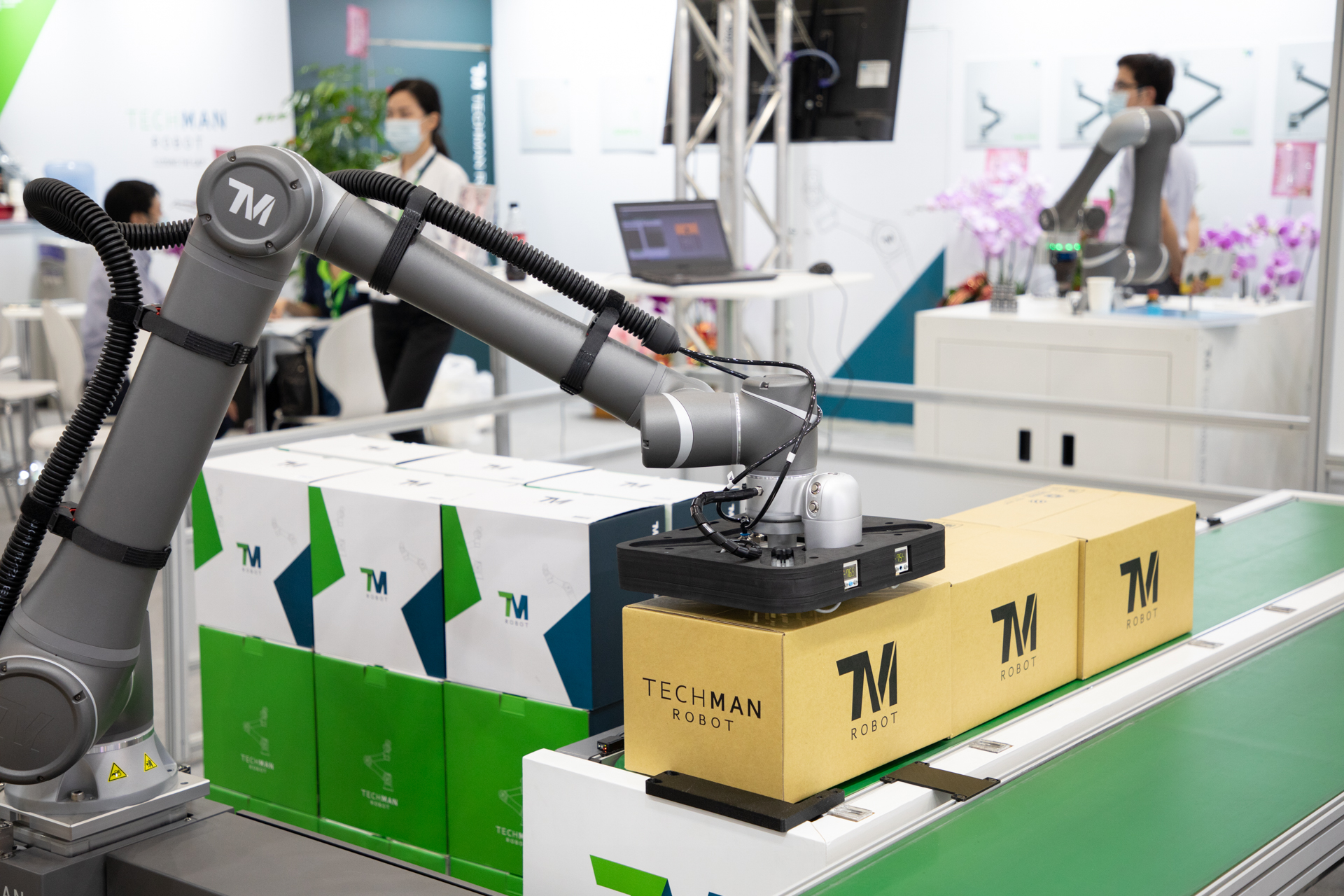What Every Manufacturer Should Know About robotic vision
Wiki Article
The Significance of an Optical Measurement System in Industrial Applications
Optical measurement systems play a vital function in commercial applications. They supply high precision and promote non-contact measurement, which is crucial for shielding delicate components. These systems improve functional efficiency and promote quality assurance. However, their application is not without obstacles. Understanding their importance and the intricacies entailed can illuminate their transformative capacity in contemporary production. What are the specific advantages and challenges that these systems present?Understanding Optical Measurement Equipments
Optical measurement systems play an important function in numerous industrial applications by supplying specific and accurate data collection. These systems use light to measure physical homes such as dimensions, surface area accounts, and material features. The basic parts usually include lasers, electronic cameras, and sensors that capture and examine light reflected from items. By using methods such as interferometry and photogrammetry, these systems can discover minute changes fit and size, which are critical for quality control and item consistency.Furthermore, optical measurement systems are non-contact, allowing them to evaluate delicate or complex things without causing damage. They are functional, discovering applications in fields like aerospace, vehicle, and electronic devices manufacturing. The combination of innovative software application for data evaluation enhances the capability of these systems, making it possible for real-time monitoring and responses. As sectors progress, the significance of optical measurement systems continues to grow, supporting the need for greater precision and performance.Secret Benefits of Optical Measurement in Manufacturing
While traditional measurement methods commonly entail physical get in touch with and can present errors, the adoption of optical measurement systems in making offers substantial advantages. These systems make use of non-contact techniques, minimizing the risk of damages to sensitive components and ensuring the stability of dimensions. Optical measurement offers high precision and accuracy, enabling manufacturers to attain limited tolerances necessary in competitive markets.Additionally, the rate of optical measurement systems boosts performance. optical measurement system. Fast data procurement permits real-time monitoring, facilitating prompt adjustments in manufacturing procedures. This performance causes decreased waste and boosted resource allocation.Furthermore, the versatility of optical systems accommodates a wide variety of products and geometries, making them appropriate for various applications. Their capability to integrate perfectly with automation technologies sustains Industry 4.0 initiatives, promoting smarter making atmospheres. Generally, the key advantages of optical measurement contribute considerably to boosting top quality control and functional efficiency in contemporary production setupsApplications of Optical Measurement Equipments
Optical measurement systems play a necessary function in numerous industrial applications, especially in boosting accuracy during producing procedures. They are integral to quality assurance and guarantee, guaranteeing that products fulfill rigorous standards. Furthermore, these systems sustain research and development efforts by giving accurate information for advancement and improvement.Precision in Manufacturing Processes
In modern manufacturing, high accuracy is important for making sure item top quality and functional efficiency. Optical measurement systems supply advanced abilities that greatly enhance precision during the manufacturing process. These systems utilize light and imaging technologies to capture in-depth dimensions of parts, making it possible for suppliers to attain limited resistances and precise measurements. By integrating optical measurement into manufacturing process, organizations can rapidly identify deviations from specifications, thereby reducing waste and minimizing rework. In addition, the non-contact nature of optical dimensions enables examining fragile or delicate products without danger of damages. Ultimately, the fostering of optical measurement systems promotes a culture of accuracy in production, bring about improved performance and competition in the industry.
Quality Control and Assurance
Quality control in making heavily counts on accurate measurement strategies to assure that products meet well established requirements. Optical measurement systems play a critical duty in this procedure, making it possible for precise analyses of dimensions, surface high quality, and various other essential functions of manufactured items. By employing high-resolution imaging and sophisticated evaluation formulas, these systems discover deviations from requirements, making sure consistency throughout manufacturing. Additionally, optical measurements can be non-destructive, protecting the honesty of products while promoting rapid analyses. The combination of these systems right into quality assurance procedures boosts efficiency and minimizes waste, ultimately adding to boosted item reliability. As markets venture for quality, the fostering of optical measurement modern technologies ends up being increasingly necessary for keeping affordable benefit and client fulfillment..png)
R & D Applications
As industries undertaking for technology, optical measurement systems have actually emerged as a vital tool in r & d applications. robotic vision. These innovative systems supply accurate dimensions of products and elements, enabling engineers and scientists to obtain essential understandings into their residential properties and performance. Optical measurement technologies, such as laser scanning and interferometry, assist in the fast prototyping of new layouts and the optimization of existing items. By catching high-resolution data, scientists can identify issues and assess the influence of numerous parameters on item functionality. Furthermore, these systems support interdisciplinary partnership, bridging spaces in between different areas of study. The combination of optical measurement systems into R&D processes inevitably speeds up growth timelines and promotes the creation of sophisticated remedies in different commercial marketsContrasting Optical Measurement to Conventional Approaches
In comparing optical measurement systems to standard methods, numerous key factors emerge, including accuracy and precision. Additionally, the rate of measurement and cost-effectiveness play considerable functions in determining the suitability of each technique for commercial applications. This assessment highlights exactly how advancements in optical modern technology may use benefits over standard techniques.Precision and Accuracy
Optical measurement systems provide considerable advantages in accuracy and accuracy compared to standard measurement approaches. These systems utilize sophisticated innovation, such as lasers and high-resolution cams, to capture dimensional data with very little mistake. On the other hand, typical methods frequently count on mechanical devices that can present variability as a result of human mistake or product wear. Optical systems can attain micrometer-level accuracy, ensuring constant results even in complex geometries. Additionally, they provide non-contact measurement, reducing the danger of damaging delicate parts. This capacity is specifically beneficial in industries where resistances are critical, such as aerospace and automotive manufacturing. As a result, the adoption of optical measurement technology boosts top quality control and minimizes the probability of flaws, eventually improving overall production performance.Speed of Measurement
The advantages of optical measurement systems expand beyond precision and precision to consist of significant renovations in measurement speed. Traditional measurement approaches typically need prolonged setups and manual estimations, which can reduce manufacturing procedures. In contrast, optical systems make use of advanced innovations such as laser scanning and imaging, enabling fast information procurement and processing. This effectiveness permits real-time dimensions, promoting quicker decision-making in manufacturing environments. The capability to capture big volumes of data quickly boosts throughput and productivity, providing businesses an affordable edge. Furthermore, with lowered measurement times, optical systems reduce downtime linked with inspections, even more simplifying operations. Subsequently, the speed of measurement in optical systems substantially contributes to general functional efficiency in industrial applications.Cost-Effectiveness Evaluation
A complete cost-effectiveness analysis reveals that optical measurement systems commonly offer substantial economic advantages over conventional techniques. These systems commonly decrease the need for comprehensive physical configurations, lessening labor prices and downtime during measurement procedures. Optical methods can also generate faster outcomes, bring about increased performance and reduced operational expenses. Additionally, the accuracy supplied by optical dimensions lowers the likelihood of costly mistakes, which can emerge from hand-operated treatments and standard strategies. In the future, the first financial investment in optical innovation is usually countered by financial savings in sources, time, and enhanced product quality. Consequently, industries that take on optical measurement systems might discover themselves not only boosting performance but likewise achieving an extra desirable cost-benefit proportion contrasted to standard strategies.
The Role of Automation in Optical Measurement
While lots of sectors progressively depend on precision and effectiveness, automation has actually become a crucial element in boosting optical measurement procedures. By integrating automated systems, companies can substantially boost measurement precision and minimize human error. Automated optical measurement systems make use of sophisticated formulas and sensors to offer real-time information evaluation, facilitating quicker decision-making and process adjustments.Additionally, automation enables constant dimensions throughout various production runs, guaranteeing that high quality criteria are kept. The scalability of automated optical measurement systems makes them suitable for varied applications, from quality control in manufacturing to assessment in semiconductor production.Furthermore, these systems can be flawlessly incorporated right into existing production arrangements, advertising a smooth change towards much more effective operations. Generally, the duty of automation in optical measurement is crucial, supplying boosted reliability, minimized labor prices, and boosted functional performance, inevitably driving commercial competitiveness.Difficulties and Considerations in Implementation
Carrying out optical measurement systems, despite the advantages of automation, offers different obstacles and factors to consider that organizations should navigate. One significant challenge is the assimilation of these systems right into existing process, which may require significant changes in procedures and staff member training. Organizations should also address the compatibility of optical measurement modern technologies with existing devices and software.Additionally, the variability of products and environmental conditions can influence measurement accuracy, necessitating durable calibration and upkeep protocols. Price is one more crucial consideration, as preliminary investments can be significant, and organizations should consider these expenses versus prospective performance gains. Data monitoring likewise positions difficulties, as the volume of information generated calls for efficient systems for storage space, evaluation, and analysis. Finally, ensuring conformity with market criteria and regulations adds one more layer of intricacy to the application procedure, needing careful planning and execution.Future Patterns in Optical Measurement Technology
As markets remain to advance, improvements in optical measurement technology are readied to change their functional landscapes. Emerging patterns suggest a change towards boosted automation and assimilation with expert system, improving the accuracy and performance of measurements. Adaptive optics is obtaining traction, enabling systems to readjust in real-time to differing ecological conditions, thus lessening mistakes. The miniaturization of optical sensors is enabling their release in much more small and diverse setups, increasing application opportunities in industries such as aerospace and manufacturing.Additionally, the growth of 3D optical measurement techniques is transforming quality control procedures, supplying even more substantial data analysis. Developments in data processing algorithms are also anticipated to enhance the interpretation of complex dimensions, making understandings a lot more easily accessible. Collectively, these patterns mirror a future where optical measurement modern technology not just enhances accuracy yet additionally improves operational dexterity, placing industries to better fulfill progressing demands.Regularly Asked Inquiries
Just How Do Optical Measurement Systems Ensure Data Precision?
Optical measurement systems ensure data accuracy through precise calibration, advanced algorithms, and high-resolution imaging. These components collaborate to minimize errors, boost measurement consistency, and offer trusted outcomes vital for various industrial applications and procedures.What Is the Normal Life Expectancy of an Optical Measurement System?
The regular lifespan of an optical measurement system differs, usually ranging from five to fifteen years. Variables influencing durability include use strength, ecological conditions, maintenance methods, and technical advancements that may require upgrades or substitutes.
Can Optical Measurement Equipments Be Customized for Certain Industries?

What Training Is Needed for Operating Optical Measurement Systems?
Educating for operating optical measurement systems usually consists of understanding system parts, software program use, calibration techniques, information evaluation, and safety and security protocols. Participants usually engage in hands-on technique and may finish accreditation courses to boost their efficiency.Exactly How Do Environmental Variables Affect Optical Measurement Outcomes?
Environmental variables, such as temperature, moisture, and illumination problems, considerably influence optical measurement outcomes. Variations in these components can cause errors, impacting the precision and integrity of measurements taken by optical systems in numerous settings.Report this wiki page